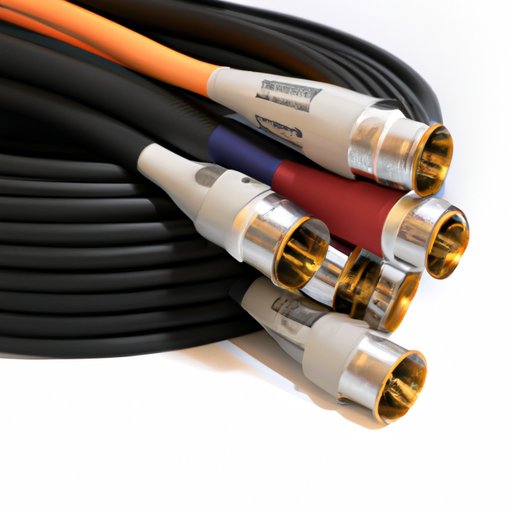Introduction
Cable television (or “cable TV” for short) is a form of subscription television service that uses a network of specialized cables to deliver multiple channels of programming to subscribers. Cable TV systems have been around since the 1950s, but with the introduction of digital technology in recent years, they have become increasingly popular. In this article, we will explore how cable TV works, including the basic components of the system, how signals are sent, different types of cables used, digital technology, advantages and disadvantages, cost, and comparison to other forms of television delivery.

Basic Components of a Cable TV System
A typical cable TV system consists of four main components: the cable box, set-top box, cable modem, and remote control. The cable box is connected to the wall outlet and serves as the central hub of the system. It receives the incoming signal from the cable provider and sends it to the set-top box. The set-top box is responsible for decoding the signal and sending it to your television. The cable modem allows you to connect to the internet via the same coaxial cable used for TV. Finally, the remote control is used to control the set-top box and cable box.

How Signals are Sent via Cable TV
Cable TV signals are transmitted using one of three methods: coaxial cable, fiber-optic cable, or digital signal transmission. Coaxial cable is a type of shielded electrical cable that is commonly used for cable TV. It consists of an inner conductor surrounded by an insulating layer and an outer shield. The signal is carried through the center of the cable, while the outer shield prevents interference from outside sources. Fiber-optic cable is a newer technology that uses light pulses instead of electricity to transmit signals. This technology is faster and more reliable than coaxial cable, but it is also more expensive. Digital signal transmission uses digital compression techniques to send signals over a variety of mediums, such as radio waves and microwaves.

Different Types of Cables Used in Cable TV Systems
There are several types of cables used in cable TV systems, each with its own purpose. The most common type is RG6, which is a coaxial cable used to carry the signal from the cable box to the set-top box. RG11 is a thicker version of RG6 and is often used for longer runs. HDMI cables are used to connect the set-top box to the television, allowing for high-definition video and audio. Finally, optical cables are used for fiber-optic systems.
Digital Technology and Cable TV
The introduction of digital technology has allowed cable TV providers to offer additional features, such as digital video recorders (DVRs), high definition (HD) programming, and video on demand (VOD). DVRs allow users to record programs for later viewing. HD programming provides a sharper picture and clearer sound. And VOD allows users to watch movies and TV shows whenever they want.
Advantages and Disadvantages of Cable TV
Cable TV has both advantages and disadvantages. On the plus side, cable TV offers a wide variety of programming, including local channels, premium channels, and international channels. Additionally, cable TV is generally more reliable than satellite or over-the-air (OTA) broadcasts. On the downside, cable TV can be expensive and may require a long-term contract. Additionally, cable companies often limit the number of channels available in certain areas.
Cost of Cable TV
The cost of cable TV varies depending on the provider and the package you select. Installation fees may apply, and there may be additional fees for hardware, such as a set-top box or cable modem. Most cable providers charge a monthly subscription fee, which typically includes access to local channels and some premium channels. Additional fees may apply for additional channels, such as sports packages or movie channels.
Comparison of Cable TV to Other Forms of Television Delivery
Cable TV is just one of many different ways to receive television programming. Satellite TV is an alternative to cable that uses satellites to transmit signals to subscribers. Over-the-air (OTA) broadcasts use antennas to pick up signals from local stations. And Internet Protocol Television (IPTV) is a newer technology that uses the internet to stream television programming directly to viewers. Each of these methods has its own advantages and disadvantages, so it’s important to consider all of your options before making a decision.
Conclusion
Cable TV is a popular way to receive television programming, and with the introduction of digital technology, it has become even more popular. A typical cable TV system consists of four main components, and signals are sent via coaxial cable, fiber-optic cable, or digital signal transmission. Different types of cables are used for different purposes, and digital technology has allowed cable providers to offer additional features, such as DVRs, HD programming, and VOD. Cable TV has both advantages and disadvantages, and the cost can vary depending on the provider and package selected. Finally, there are several other ways to receive television programming, such as satellite, over-the-air (OTA), and IPTV.
(Note: Is this article not meeting your expectations? Do you have knowledge or insights to share? Unlock new opportunities and expand your reach by joining our authors team. Click Registration to join us and share your expertise with our readers.)
